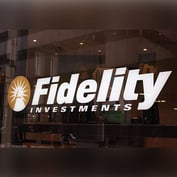New York – Will alternative investment options be an important piece in ensuring that an individual has sufficient assets to provide regular income in retirement? Speakers at conferences held here last month maintain that alternative investments will help to deliver added returns that can ensure that income does not run out.
“The use of alternative investments is most timely for the fluctuations “financial intermediaries are wrestling with right now,” said David Reilly, director of portfolio strategies, Rydex Investments, Rockville, Md. He was speaking at a press briefing put together by Rydex, an open mutual fund family offering various alternative investment funds such as a managed futures fund.
Investments such as commodities or currencies may seem technical to the average investor when they look at asset classes, but alternative investments are a “strategic” part of a portfolio, he said.”People’s portfolios are stuffed with domestic stocks,” Reilly noted. Traditionally investment alternatives have been for high net worth individuals, but the average retail investor needs to start looking at other sources of return, he added. “The traditional approach has been to diversify with stocks, bonds and cash,” he said.
In the past, investments in alternative investments required both high minimum investments and high suitability requirements, said Edward Egilinsky, Rydex managing director-alternative strategies. But by using a mutual fund family, there is greater transparency, he added. Schaumburg, Ill.
A survey conducted by Rydex and e-Rewards last month found that 75% of investors surveyed do not know what alternative investments are, and 63% of investors who are familiar with them don’t invest in them because they say they don’t know enough about them. Twenty-five percent of those who do know about them say they are too risky, and 19% don’t know how to buy them, the survey found.
P.J. DiNuzzo, a financial advisor with DiNuzzo Investment Advisors, Pittsburgh, and a speaker at the briefing, said research shows that the return for institutional investors such as foundations and endowment funds is twice as good as for retail investors.
Pittsburgh has one of the oldest populations in the country, he pointed out, so many couples who come to him are trying to determine whether they will have enough of a return in their portfolios to generate income through retirement. Most are invested in 2-3 asset classes, he said. But if a withdrawal rate of around 5% and an inflation rate of 4%-4.5% create a hurdle rate for a retired individual’s portfolio, then market downturns can have a “catastrophic” impact on portfolios that don’t have added returns.








 March 31, 2008 at 08:00 PM
March 31, 2008 at 08:00 PM










